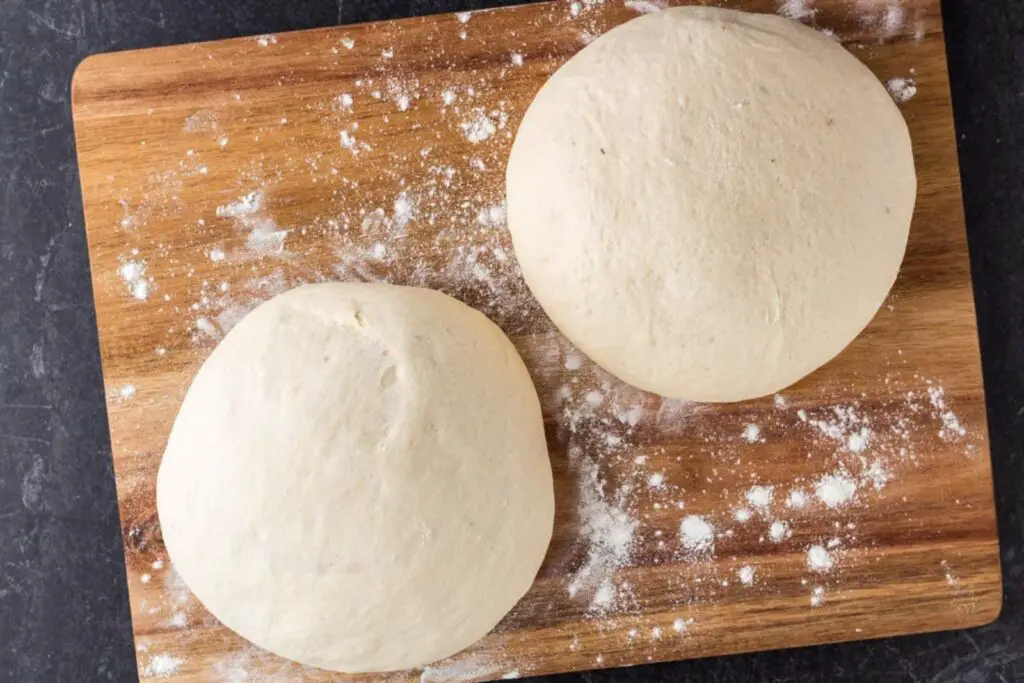
Cloud bread, a light and fluffy low-carb bread alternative, has gained popularity among those seeking a gluten-free or keto-friendly option. This unique bread is made with just a few simple ingredients, including eggs, cream cheese, and cream of tartar, resulting in a bread-like texture with a pillowy softness. Cloud bread is not only versatile but also a healthier option for those looking to reduce their carbohydrate intake. Whether used as a sandwich base, a burger bun substitute, or a standalone snack, cloud bread offers a guilt-free indulgence. If you want to have a batch of cloud bread ready for quick and convenient meals, freezing is an excellent choice. Freezing cloud bread allows you to have a supply of this airy delight on hand, ensuring that you can enjoy its lightness and flavor whenever you desire. In this guide, we will explore the proper techniques for freezing cloud bread, including packaging and storage tips, so you can experience the convenience of having this low-carb bread readily available to enhance your culinary creations. Join us as we dive into the world of freezing cloud bread and discover the endless possibilities it offers.
Here are the simple steps to freeze cloud bread:
Step 1: Bake or Purchase Fresh Cloud Bread
Freezing cloud bread begins with having a fresh batch of it on hand. There are two primary options for obtaining cloud bread: baking it yourself or purchasing premade cloud bread from a store.
If you decide to bake cloud bread at home, you can find various recipes online that provide step-by-step instructions. These recipes typically involve whisking together eggs, cream cheese, and a sweetener or seasoning of your choice. The resulting batter is then spread into individual rounds or shapes and baked until they rise and turn golden.
On the other hand, if you prefer convenience or lack the time to bake cloud bread from scratch, you can opt to purchase pre-made cloud bread from a store. Many grocery stores and specialty food shops now offer cloud bread in their low-carb or gluten-free sections. Check the refrigerated or frozen aisles to find pre-packaged cloud bread that is ready to be frozen.
Regardless of whether you bake or buy cloud bread, it is crucial to ensure that the bread is completely cooled before proceeding to the next step. This cooling period allows the bread to firm up and stabilize, making it easier to handle and package for freezing.
By starting with fresh cloud bread, whether homemade or store-bought, you set the stage for successful freezing and the preservation of its delightful texture and taste.
Step 2: Prepare the Bread to Freeze
When freezing cloud bread, it is beneficial to prepare it in a way that facilitates easy thawing and portioning in the future. If your cloud bread is in large pieces or slices, it is advisable to cut it into individual serving sizes or any preferred portion before freezing.
By dividing the cloud bread into smaller portions, you have the flexibility to thaw only what you need, reducing waste and ensuring that the remaining bread remains frozen and fresh. Individual servings are particularly convenient if you plan to use cloud bread for sandwiches, snacks, or as a base for toppings.
To cut the cloud bread, you can use a sharp knife or kitchen shears. Start by determining the desired size of each portion based on your preferences and typical usage. Then, carefully cut the bread into uniform pieces, ensuring clean edges and even thickness.
If you prefer specific shapes or sizes, such as squares, rectangles, or rounds, you can use cookie cutters or a knife to achieve those shapes. This step allows for consistent portions and helps maintain the bread’s visual appeal.
After portioning, you can proceed to the next step of packaging the cloud bread for freezing. Wrapping each portion individually or arranging them in freezer bags or airtight containers will help protect them from freezer burn and keep them fresh for an extended period.
Step 3: Wrap the Cloud Bread
To maintain the quality and freshness of the cloud bread during freezing, it’s crucial to protect it from freezer burn and prevent moisture loss. This can be achieved by properly wrapping each piece of cloud bread before placing it in the freezer. There are several options for packaging, including plastic wrap, freezer bags, or airtight containers.
If you choose to use plastic wrap, take a piece large enough to completely enclose the cloud bread. Place the bread in the center of the wrap and fold the edges over it. Gently press the wrap against the bread, ensuring that there are no air pockets or exposed surfaces. Continue wrapping tightly until the entire piece of cloud bread is covered.
Another option is to use freezer bags, which are designed to provide an extra layer of protection against freezer burn. Select a bag appropriate for the size of the cloud bread portion and place the bread inside. Squeeze out as much air as possible before sealing the bag, ensuring a tight closure. This helps prevent the bread from drying out and maintains its moisture content.
Alternatively, airtight containers can also be used to store cloud bread. Choose containers that are the right size to accommodate the portions without excessive empty space. Place the cloud bread inside the container and seal it tightly to create an airtight environment.
Regardless of the method you choose, the key is to ensure that the cloud bread is tightly wrapped or sealed to prevent air exposure. This step helps maintain its texture, moisture, and overall quality during freezing.
By properly wrapping each piece of cloud bread in plastic wrap, using freezer bags, or storing them in airtight containers, you create a protective barrier that minimizes the risk of freezer burn and helps retain the moisture and freshness of the bread.
Step 4: Remove Excess Air
When packaging cloud bread using plastic wrap or freezer bags, it is essential to remove as much air as possible before sealing. This step serves two purposes: preventing freezer burn and preserving the quality of the cloud bread.
Excess air trapped inside the packaging can lead to freezer burn, which occurs when moisture evaporates from the surface of the bread and forms ice crystals. Freezer burn can cause the bread to become dry, discolored, and develop a stale taste. By removing the air, you create a more favorable environment for freezing, minimizing the risk of freezer burn and maintaining the bread’s texture and flavor.
To remove excess air when using plastic wrap, carefully press and squeeze the wrapped cloud bread, starting from one end and moving towards the other. Apply gentle pressure to eliminate any pockets of air, making sure the wrap adheres tightly to the bread’s surface.
When using freezer bags, the process is similar. After placing the cloud bread inside the bag, press on the bag’s opening to release as much air as possible. Starting from the bottom, slowly seal the bag, gently squeezing out any remaining air. Once sealed, check for any air pockets and press on the bag again to ensure a tight seal.
Removing excess air is crucial because it minimizes the contact between the cloud bread and the air, reducing the chances of freezer burn and maintaining the bread’s moisture content. This step helps to preserve the quality of the cloud bread, ensuring that it remains fresh and delicious when thawed.
By taking the extra effort to remove excess air before sealing the packaging, you enhance the effectiveness of freezing cloud bread, keeping it in optimal condition until you’re ready to enjoy it.
Step 5: Label and Date
When freezing cloud bread, it is important to label and date each package. This step allows you to keep track of the freezing time and ensures that you use the oldest cloud bread first, maintaining a rotation system for optimal freshness.
To label the packages, use a permanent marker or freezer-safe labels. Write the date of freezing on each package, indicating the day, month, and year. Make sure the label is clear and easily readable.
By labeling and dating the packages, you establish a system that helps you keep track of the cloud bread’s storage duration. This information becomes especially useful if you freeze multiple batches or portions at different times. It allows you to prioritize the consumption of cloud bread based on its freezing order, ensuring that you use the oldest bread first to minimize any potential loss of quality.
In addition to the date, you can also include any additional information on the label, such as the type of cloud bread or any specific flavor variations, if applicable. This can be helpful if you have different varieties of cloud bread in your freezer.
Taking the time to label and date the packages may seem like a small step, but it significantly contributes to the organization and efficiency of your frozen cloud bread supply. It ensures that you can easily identify and use the oldest bread first, maximizing its freshness and taste.
Whether using a permanent marker directly on the packaging or freezer-safe labels, incorporating this labeling step into your cloud bread freezing process is a simple yet effective way to keep track of the freezing time and maintain an organized freezer inventory.
Step 6: Store in the Freezer
Once you have properly wrapped and labeled the cloud bread packages, it’s time to store them in the freezer. Proper storage ensures that the cloud bread remains in excellent condition until you’re ready to thaw and use it. Here’s how to store the wrapped cloud bread in the freezer:
- Choose an appropriate location: Select a spot in your freezer where the temperature remains consistent and doesn’t experience frequent fluctuations. This helps maintain the quality of the cloud bread during freezing.
- Arrange in a single layer or stack neatly: Place the wrapped cloud bread packages in the freezer, either in a single layer or stacked neatly on top of one another. If you stack them, ensure that the packages are stable and won’t easily topple over. However, avoid overcrowding the freezer as it can restrict airflow and lead to uneven freezing or potential damage to the bread.
- Allow for proper air circulation: It’s essential to provide adequate air circulation around the cloud bread packages. This allows the cold air to circulate freely and maintain a consistent temperature, preventing any hotspots within the freezer. Avoid tightly packing the packages together, as this can impede proper airflow and potentially affect the quality of the bread.
By arranging the cloud bread packages in a single layer or stacking them neatly while allowing for proper air circulation, you create an optimal storage environment in the freezer. This arrangement helps maintain the bread’s texture, taste, and overall quality throughout the freezing period.
How long can cloud bread last in the freezer?
Cloud bread can last in the freezer for approximately 2 to 3 months when stored properly. It is important to wrap the cloud bread tightly in plastic wrap or place it in airtight containers to prevent freezer burn. By labeling and dating the packages, you can easily keep track of the storage time and prioritize consuming the oldest cloud bread first for optimal taste and quality.
Step 7: Thaw the Frozen Cloud Bread
When the time comes to enjoy your frozen cloud bread, follow these steps to thaw it and savor its delightful taste and texture:
- Retrieve the desired number of portions: Remove the wrapped cloud bread packages from the freezer, selecting the number of portions you intend to thaw and consume. Remember to keep the remaining packages in the freezer for future use.
- Thaw at room temperature: Place the wrapped cloud bread portions on a plate or a clean surface and let them thaw at room temperature. This process typically takes around 30 minutes to an hour, depending on the size and thickness of the bread. As the cloud bread thaws, it regains its soft and fluffy texture.
- Reheat if desired: If you prefer warm cloud bread or want to restore its fresh-from-the-oven feel, you can gently reheat it. To do so, preheat your toaster or oven to a low or medium setting. Remove the plastic wrap from the thawed cloud bread portion and place it in the toaster or oven for a few minutes, just until warmed through. Be careful not to overheat or toast the cloud bread, as it may become dry or lose its light texture.
By thawing easily your frozen cloud bread and enjoy its fresh, fluffy texture. Whether you prefer it at room temperature or gently warmed, the thawed cloud bread is ready to elevate your meals or snacks.
Other related questions
Can you refreeze cloud bread?
It is generally not recommended to refreeze cloud bread once it has been thawed. The repeated freezing and thawing process can negatively impact the texture and quality of the bread, leading to a loss of its light and fluffy characteristics. To maintain the best taste and texture, it is advisable to thaw only the amount of cloud bread needed for immediate consumption and avoid refreezing any leftovers.
How do I know if the cloud bread has gone bad after being frozen?
To determine if frozen cloud bread has gone bad, examine its appearance, texture, and smell. If the bread shows signs of excessive freezer burn, such as dryness, discoloration, or an unpleasant odor, it may have deteriorated in quality. Additionally, if the texture is noticeably compromised, becoming overly dry, crumbly, or mushy, it is an indication that the cloud bread has likely gone bad. It is always recommended to use your judgment and discard the bread if you have any doubts about its safety or quality.
Can you freeze plain or flavored varieties of cloud bread?
Yes, you can freeze both plain and flavored varieties of cloud bread. Whether it’s the classic plain version or a flavored variation like garlic, cheese, or herbs, cloud bread can be frozen successfully. When ready to enjoy, simply thaw the frozen cloud bread at room temperature or reheat it in an oven or toaster for a warm and delicious treat.
Can you freeze cloud bread with spreads or fillings?
It is not recommended to freeze cloud bread with spreads or fillings already incorporated. Freezing cloud bread with spreads or fillings can result in changes in texture, consistency, and flavor. To preserve the quality of the spreads or fillings, it is best to freeze the plain cloud bread and add the spreads or fillings after thawing. This ensures that the spreads and fillings maintain their desired texture and taste. Proper packaging and sealing are important to prevent freezer burn and maintain the freshness of the cloud bread.
Can you freeze cloud bread with a high moisture content?
Cloud bread, known for its light and fluffy texture, can be frozen despite its high moisture content. However, it’s important to note that freezing may affect its texture and consistency upon thawing. To freeze cloud bread with a high moisture content, ensure it is completely cooled before packaging it in airtight containers or freezer bags. Thawed cloud bread may not retain its original moisture level but can still be enjoyed as a low-carb alternative in various culinary applications.








